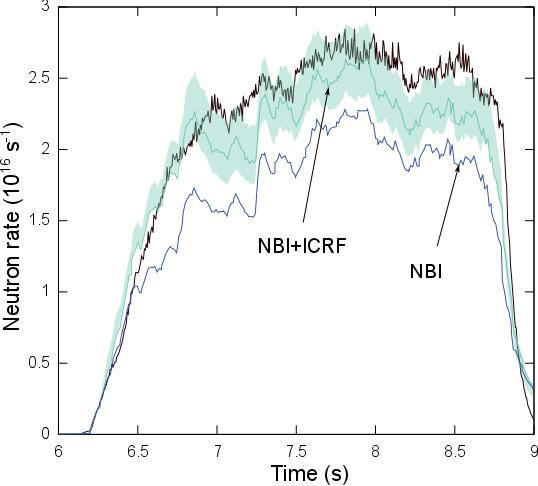Our recent research results have advanced the understanding of how to reach high fusion performance in fusion experiments in the Joint European Torus (JET), in preparation of ITER. JET is the largest experimental fusion device in operation today and the only one capable of using the fusion reactor relevant fuel mixture of heavy hydrogen isotopes deuterium (D) and tritium (T).
Our research has focused on the impact of neutral beam injection (NBI) and ion cyclotron resonance frequency (ICRF) heating on the fusion yield. These heating methods will be used in ITER to heat the fuel to high temperatures required for fusion. The main ICRF scheme that we have studied both experimentally and computationally at JET is heating of minority hydrogen ions in a D plasma with D beam ions. Apart from the D plasma scenario, we have also investigated the deuterium-tritium (DT) plasma scenario through an extrapolation of D high-performance discharges.
Our experimental and modelling results have allowed us to draw several important conclusions regarding the role of auxiliary heating on the fusion plasma performance, which helps us to improve the fusion plasma performance in the forthcoming campaign with D-T fuel mixture at JET. One of the main goals for this flagship campaign is to achieve world-record fusion performance for a duration of more than 5 s.
Reference
